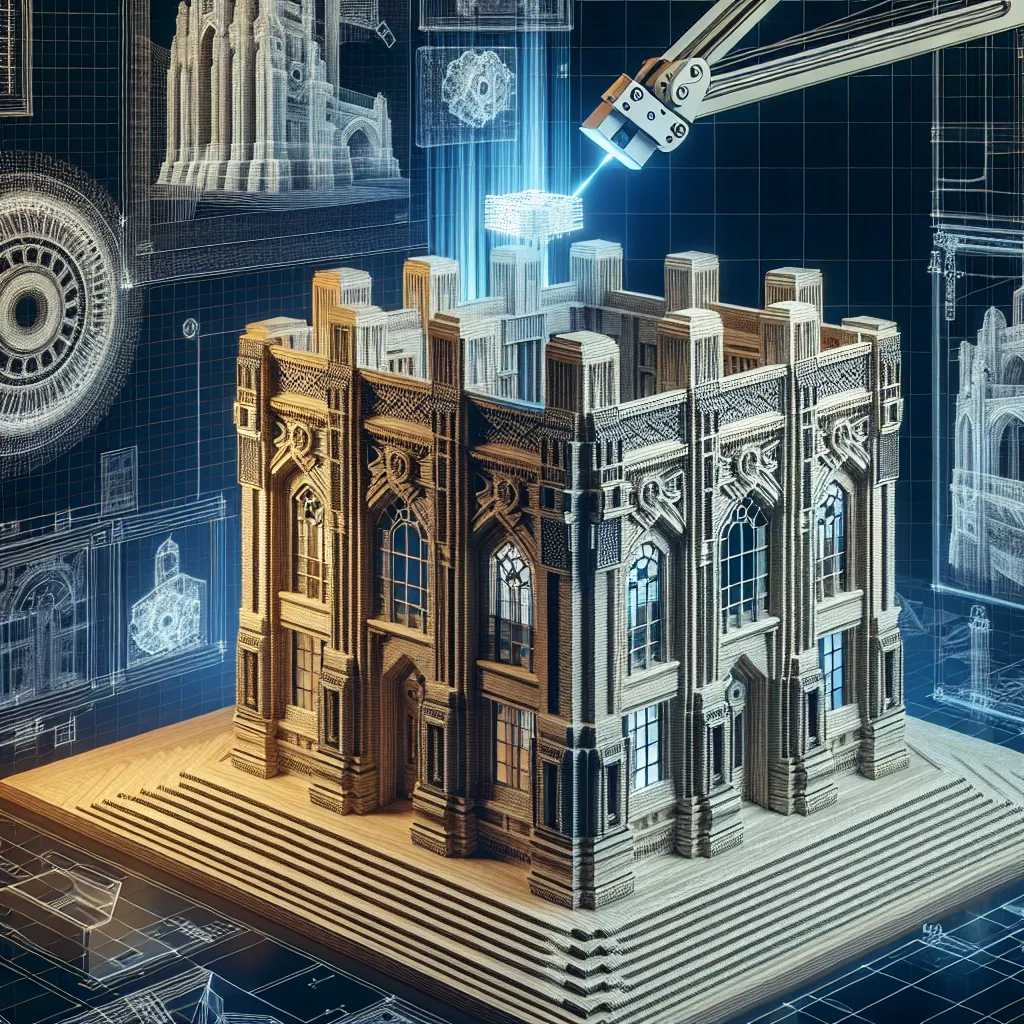The Impact of 3D Printing on Modern Construction Techniques
 Quantum Cyber Solutions
Quantum Cyber Solutions
Published on
Wednesday, May 22, 2024
The Impact of 3D Printing on Modern Construction Techniques
===============================================================
Authors

Name
Con Tech News
Twitter
The Impact of 3D Printing on Modern Construction Techniques
The construction industry is on the brink of a revolution, and one of the key catalysts of this seismic shift is 3D printing. No longer confined to the realm of hobbyists and small-scale manufacturing, 3D printing technology is set to disrupt traditional construction methods with its incredible potential. Let’s dive deep into the ways in which 3D printing is transforming the landscape of modern construction.
A Leap in Efficiency and Cost-Effectiveness
One of the most compelling advantages of 3D printing in construction is the potential for significantly increased efficiency and cost reduction. Traditional construction methods often involve a considerable amount of waste due to overproduction and material offcuts. By using precision additive manufacturing, 3D printing produces structures layer by layer, minimizing waste and optimizing material usage.
Imagine printing a house in just a few days instead of months! This isn't a futuristic fantasy but a tangible reality. Companies like Apis Cor and ICON have already demonstrated that 3D printing can reduce construction time drastically. The reduction in labor costs and material wastage cannot be overstated; it reshapes the economic landscape of construction projects.
Unprecedented Architectural Freedom
Beyond the economic benefits, 3D printing opens up a new world of architectural possibilities. Traditional construction methods often limit designs due to the complexity and cost of fabricating intricate shapes and structures. Such limitations are virtually nonexistent with 3D printing.
Architects are exploiting this technology to push the boundaries of what’s possible, creating intricate and previously unfeasible designs. Organic shapes that emulate nature, complex geometries, bespoke interiors—you name it, 3D printing can achieve it. This newfound architectural freedom not only allows for more aesthetically pleasing structures but also buildings that are more functional and environmentally friendly.
Sustainability and Environmental Impact
Speaking of environmental friendliness, 3D printing also holds promise for more sustainable construction practices. The construction industry is notorious for its substantial carbon footprint, making sustainability a critical focus area. By using eco-friendly materials and reducing waste, 3D printing can address some of the industry's biggest environmental challenges.
For instance, research into printable concrete and alternative sustainable materials is gaining momentum. Recycled plastics, bio-based composites, and other innovative materials can be used in 3D printers to construct buildings that are not only functional and beautiful but also significantly greener.
Addressing Housing Shortages Globally
Housing shortages are a pressing issue in many parts of the world. The ability to rapidly construct affordable and durable homes using 3D printing technology offers a viable solution to this problem. Non-profits and companies alike are taking up the challenge; for example, New Story partnered with ICON to build an entire community of 3D-printed homes in Latin America. This initiative demonstrates the potential for 3D printing to provide quick, cost-effective, and scalable solutions to housing crises.
Challenges and the Road Ahead
Of course, no technological revolution comes without its hurdles. Regulatory issues, the need for specialized skills, and the initial setup costs for 3D printing infrastructure are some of the challenges that need to be addressed. Furthermore, quality control and ensuring the structural integrity of 3D-printed buildings remain concerns that require ongoing research and development.
However, the trajectory is clear. As 3D printing technology continues to advance and mature, its adoption in the construction industry is set to accelerate. Companies and governments around the world are beginning to recognize the transformative potential of this technology.
Conclusion
3D printing in construction is not just a fleeting trend but a significant technological advancement that is redefining what is possible in the industry. By boosting efficiency, unleashing architectural creativity, promoting sustainability, and addressing housing shortages, 3D printing is poised to play a pivotal role in constructing the future. We are on the cusp of a new era in construction—one that promises to be as groundbreaking as it is inspiring.
The question is no longer whether 3D printing will impact modern construction techniques, but how quickly and profoundly this impact will make its mark. Stay tuned, because the future of construction is being printed today!
Discuss on Twitter • View on GitHub
Tags
Previous Article
The Impact of Smart Sensors on Construction Safety
Next Article
Subscribe to my newsletter
Read articles from Quantum Cyber Solutions directly inside your inbox. Subscribe to the newsletter, and don't miss out.
Written by
